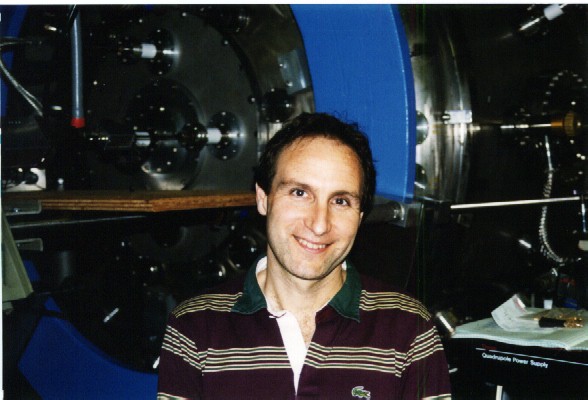 |
David A. Cylinder
|
Plasma- Science and Technology
 |
David A. Cylinder
|
Dave Cylinder Develops Bird-like Surveillance Devices
By Patti Wieser
The next time a small bird perches on a ledge outside your office window, beware; it could be a surveil-lance device. PPPL researcher David Cylinder is creating innova-tive, bird-like airframes for micro aircraft vehicles, which could carry sensors for intelligence gathering and radar jamming. Cylinder's creation is part of his work with the U.S. Naval Research Laboratory (NRL) to develop au-tonomous vehicle systems for use in various military applications.
Bug-size to Bird-size The aircraft would range from bug-size to bird-size, weigh in at under a pound, and have wingspans of less than a foot. The Navy and Marines would ultimately use the aircraft to carry electronic, acoustical, magnetic, nuclear, chemical, motion, and other types of micro-sensors and secure transmitters. For surveillance pur-poses, the vehicles could resemble an insect or a bird.Cylinder designed one model, Samara, which looks like two winged seeds that counter rotate. The name hails from the samara seed &emdash; such as that of a maple tree &emdash;which has a wing like a single-bladed rotor. Inspired by Hummingbirds His inspiration for the Samara model? Humming-birds. "I thought about the Samara design while I was in the backyard watching a hummingbird. When they hover, they flap their wings like reversing propellers because without a rotary joint, the wings cannot go all the way around like a helicopter. The Samara's wings rotate slightly off kilter, so that they can go all the way around.
One wing just passes over the top of the other," he noted. Cylinder's models, made from balsa wood reinforced with carbon fiber and a smattering of plastic, are ex-tremely delicate. Fashioned from his designs, he fabri-cates them with off-the-shelf parts and raw materials. Powered by rubber bands or small electric motors, the models can actually fly. Cylinder's initial tiny demonstration model has a six-inch wingspan. The next remote-controlled prototype will be more practical with a 14-inch wingspan. "In the future, we will be able to build whatever size to fit the need," he said. The researcher, who came to the Lab in 1980 and has been involved in the Magnetic Reconnection Experiment (MRX), will be moving to a new space in the C-wing to concentrate full-time on developing micro aircraft. Pres-ently, he is devoting half of his time to Micro Air Vehicle work. It is a dream come true, said the PPPL technician, The following story appeared in the July 12, 2000 issue of the PPPL HOTLINE.